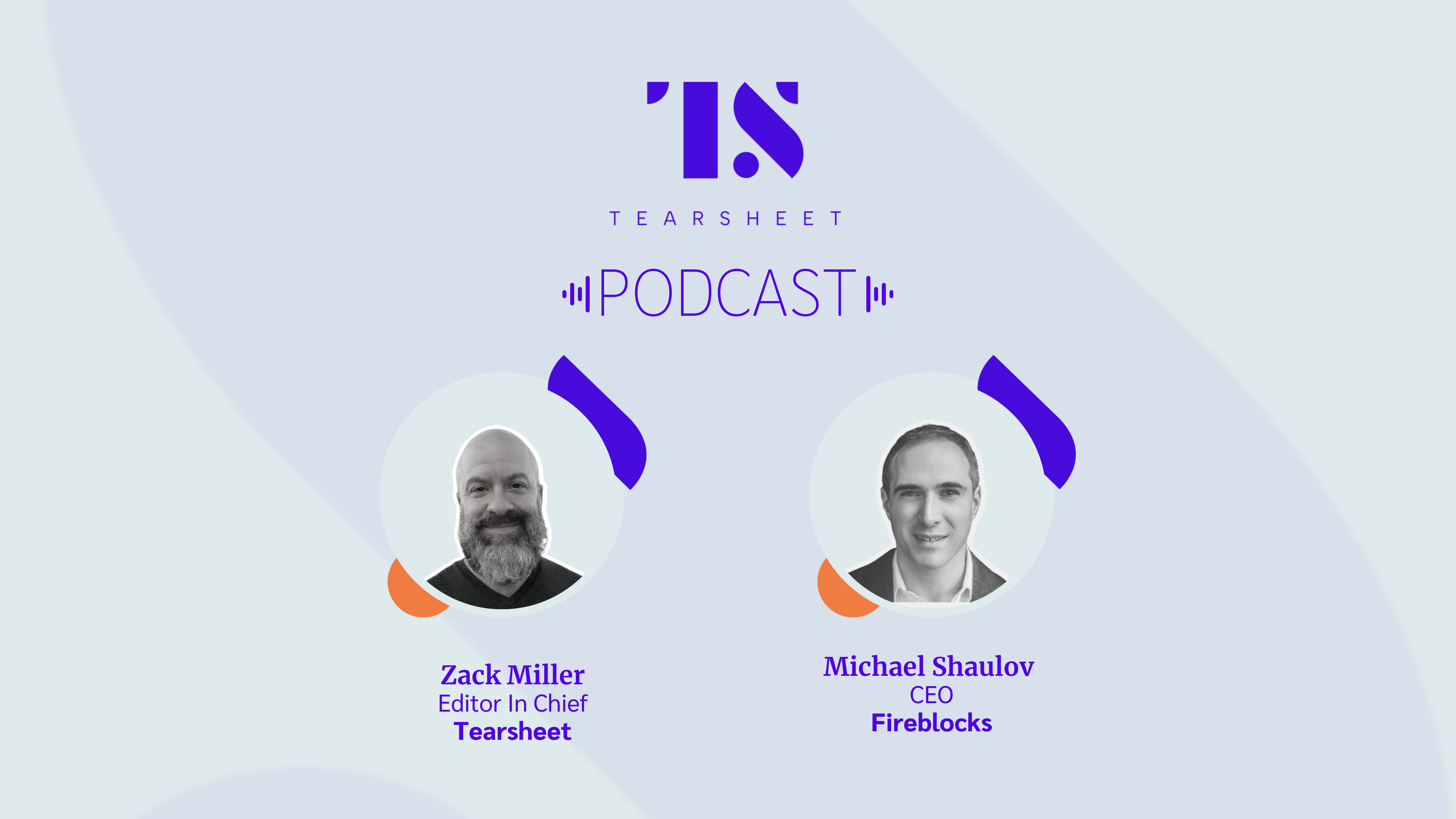Podcasts
‘You can use blockchain programmatically to reduce counterparty risk’: Fireblocks’ Michael Shaulov
- Fireblocks is used by banks, fintechs, and businesses around the world to manage digital assets.
- We interview CEO Michael Shaulov on the Tearsheet podcast to get his view on where the market for institutional use cases of blockchain is headed.








